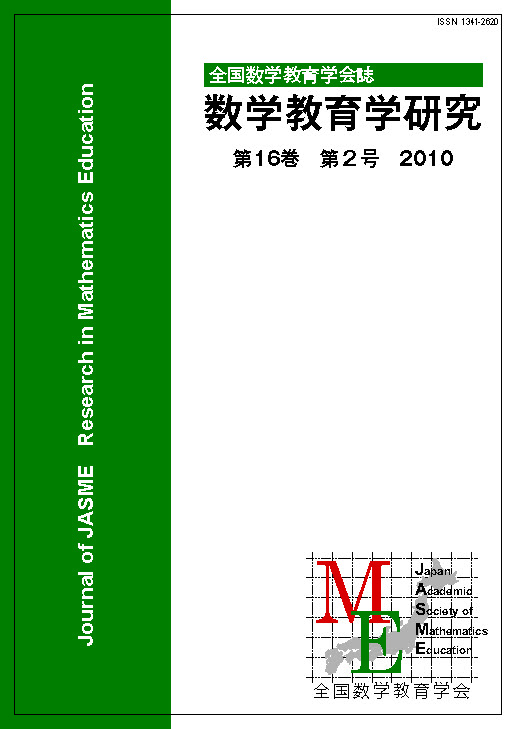16 巻, 2 号
数学教育学研究
選択された号の論文の8件中1~8を表示しています
- |<
- <
- 1
- >
- >|
-
原稿種別: 本文
2010 年 16 巻 2 号 p. 1-10
発行日: 2010年
公開日: 2019/01/17
PDF形式でダウンロード (1290K) -
原稿種別: 本文
2010 年 16 巻 2 号 p. 11-20
発行日: 2010年
公開日: 2019/01/17
PDF形式でダウンロード (1234K) -
原稿種別: 本文
2010 年 16 巻 2 号 p. 21-28
発行日: 2010年
公開日: 2019/01/17
PDF形式でダウンロード (1220K) -
原稿種別: 本文
2010 年 16 巻 2 号 p. 29-37
発行日: 2010年
公開日: 2019/01/17
PDF形式でダウンロード (1014K) -
原稿種別: 本文
2010 年 16 巻 2 号 p. 39-46
発行日: 2010年
公開日: 2019/01/17
PDF形式でダウンロード (962K) -
原稿種別: 本文
2010 年 16 巻 2 号 p. 47-56
発行日: 2010年
公開日: 2019/01/17
PDF形式でダウンロード (1188K) -
原稿種別: 本文
2010 年 16 巻 2 号 p. 57-70
発行日: 2010年
公開日: 2019/01/17
PDF形式でダウンロード (1168K) -
原稿種別: 本文
2010 年 16 巻 2 号 p. 71-79
発行日: 2010年
公開日: 2019/01/17
PDF形式でダウンロード (1225K)
- |<
- <
- 1
- >
- >|
